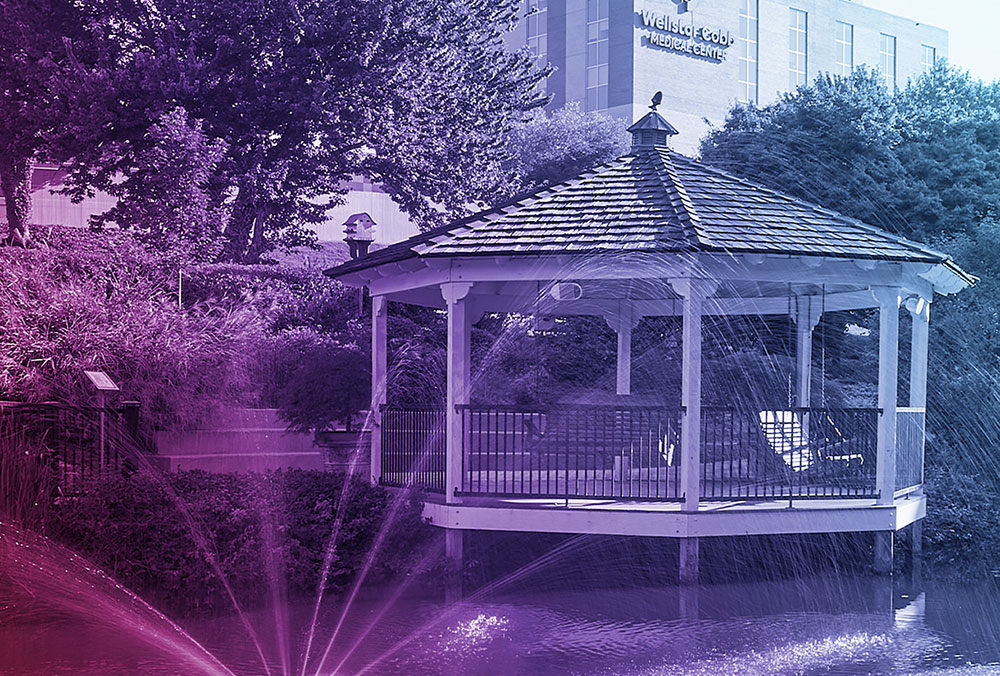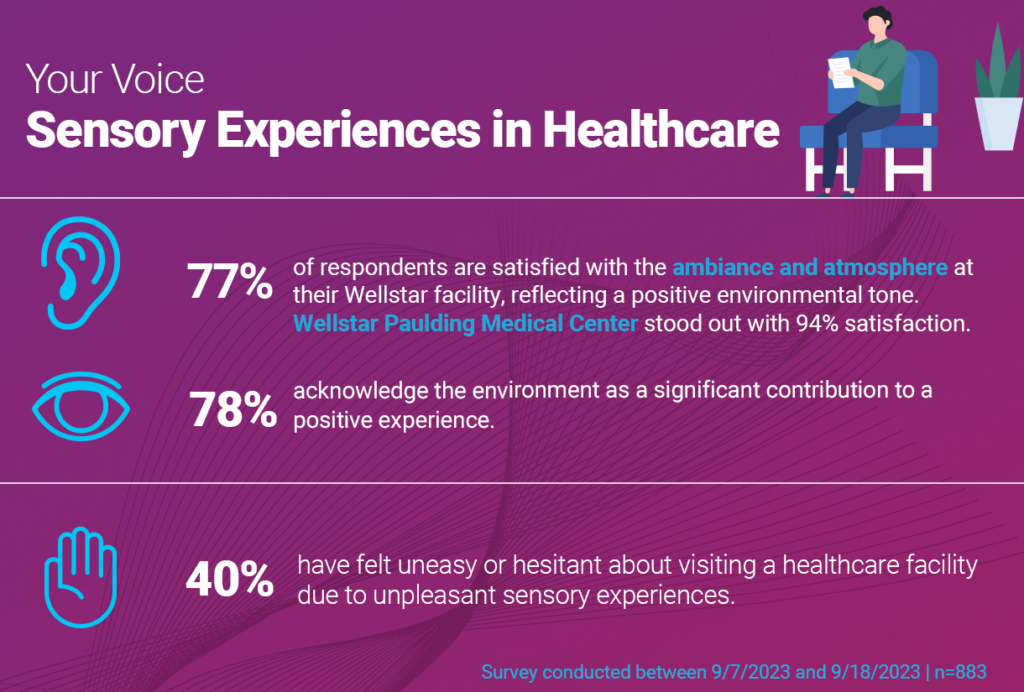
Maybe it’s the antiseptic smell that hits you as soon as you walk in. Or the fluorescent lights that exhaust your vision. It could also be the hospital food – a phrase that’s every chef’s worst nightmare. Your five senses aren’t always treated kindly when visiting a hospital, which can delay your healing.

This oasis at Wellstar Cobb Hospital provides a relaxing place for patients and families. Created in 1992, it’s also used for occupational therapy thanks to its wheelchair-accessible vegetable beds.
These poor sensory experiences contribute to people avoiding hospitals, even when they need urgent care. For some neurodivergent patients, this overwhelming number of senses at the same time – such as weird sounds and strange smells – can lead to distress during their hospital visits.
Not only do these sensations affect patient well-being, but they can also take a toll on staff. One estimate from a study in Connecticut indicated that 90% of patient alarms from machines such as heart monitors, infusion pumps and ventilators in intensive care units are false. These false alarms can scare patients and desensitize staff due to fatigue.
“While we can shut our eyes off, there’s no way to close our ears,” said Howard Rose, head of Health and Wellness at the award-winning immersive audio company Spatial.
But what if we could make hospitals feel more like home, your favorite hotel or that one incredible retail store you can’t help but visit in the mall?
Better sensory experiences are already here
There are ways to change sensory discomfort, as some Wellstar facilities have recently shown.
This fall at Wellstar Cobb Medical Center, expecting moms will have access to the healing power of sound thanks to Spatial and HealthTunes, a nonprofit digital streaming platform offering scientific-based MusicMedicine. Patients will be able to choose and control calming sound options through an iPad, enjoying guided meditation, breathing exercises and more.
The same technology is present in our Wellness Rooms, which were already used by over 10,000 team members, with 90% reporting a positive mental impact. This was Catalyst’s first pilot project, and its success was recently featured in the latest edition of Voices of Innovation, a HIMMS book series. If this patient-facing study proves to be successful, more hospital units could receive the technology in the future.
The way an environment looks also contributes to healing.
The Wellstar Douglas Hospital Pediatric Emergency Department, which opened in 2021, was built with children in mind, featuring child-sized furniture, colorful walls and large flat-screen TVs. The aquarium theme is soothing for children. Most importantly, they don’t have to share an ED with adults, where they may experience unnecessary distress.
Where can we go next?
We also received suggestions right here on Voice regarding tactile experiences. One user commented that she finds the crinkly paper over exam beds uncomfortable and makes her feel nervous.
Another way to improve an environment can be through positive media, such as slide shows or videos of people supporting each other. Practicing, receiving or watching gestures of kindness can decrease blood pressure and cortisol, the stress hormone. With the increasing availability of screens and virtual reality devices, there are several ways to display this type of media in areas throughout a hospital.
What parts of the hospital sensory experience affect you the most? Is there anything you’d change about what you see, hear, feel, smell and taste in your healthcare facility? Let us know your thoughts in our newest Voice survey.
Survey Results: Sensory Experiences in Healthcare
Thank you for taking our survey to help improve the hospital experience. Your feedback will be sent to team leaders across Wellstar. Did you miss the survey or think of something else? Leave a comment below.


